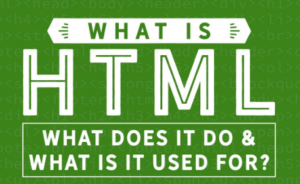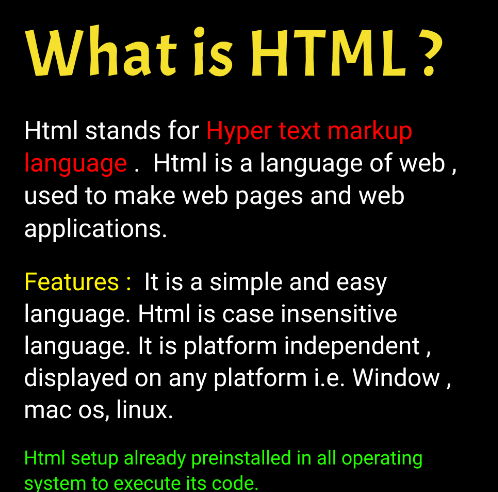HTML, or HyperText Markup Language, is a cornerstone of the internet. It serves as the fundamental language for constructing web pages, enabling the creation of captivating websites, and facilitating seamless online experiences. In this article, we will explore the diverse and essential uses and power of HTML in the modern digital landscape.
The Foundation of Web Content
At the core of HTML’s purpose is the structuring of web content. HTML tags, which are enclosed in angle brackets like <tag>, define the various elements on a web page. These elements can range from headings and paragraphs to images and links. Furthermore, HTML allows content creators to arrange these elements hierarchically, providing a clear and organized structure to web pages.
Formatting and Styling Content
HTML is not just about structuring content; it also plays a pivotal role in formatting and styling. For instance, HTML tags can be used to create headings of different sizes, emphasizing the importance of specific sections within a page. Through CSS (Cascading Style Sheets) and HTML, it is possible to adjust fonts, colors, and layouts, thereby tailoring the visual appeal of a website to align with its purpose and branding.
Creating Hyperlinks and Navigation
One of HTML’s most significant contributions to web functionality is its ability to create hyperlinks, or simply “links.” In addition, HTML facilitates the creation of navigation menus, allowing users to seamlessly navigate between different sections or pages of a website. Moreover, links can connect to other web pages, files, or even email addresses, enhancing user engagement and interaction.
Supporting Multimedia Content
In the age of multimedia-rich web experiences, HTML plays an indispensable role in embedding various media types. Moreover, HTML5, the latest iteration of HTML, has introduced native support for audio and video elements. This means that content creators can effortlessly incorporate multimedia elements like videos, audio clips, and interactive graphics directly into their web pages.
Form Handling and User Interaction
HTML is not limited to static content; it also empowers websites with dynamic capabilities. Through HTML forms, users can input data, submit feedback, or make online purchases. Additionally, HTML offers a wide array of form elements, including text fields, checkboxes, radio buttons, and drop-down lists. When users interact with these forms, the data can be processed and sent to servers for further action, making HTML a vital part of e-commerce and user engagement.

Responsive Design and Cross-Platform Compatibility
In today’s digital landscape, responsive web design is crucial. Consequently, HTML and CSS are essential tools for creating websites that adapt seamlessly to different screen sizes and devices. This responsiveness ensures that users have a consistent and user-friendly experience whether they access a site on a desktop computer, tablet, or smartphone.
Semantic HTML for Accessibility
Web accessibility is a paramount concern, and HTML plays a vital role in making websites inclusive to all users, regardless of disabilities. Moreover, semantic HTML elements, such as headings, lists, and landmarks, provide important cues to assistive technologies like screen readers. Moreover, this enables visually impaired individuals to navigate and comprehend web content effectively.
SEO Optimization
Search Engine Optimization (SEO) is a critical factor in driving organic traffic to websites. HTML plays a significant role in optimizing a website’s structure and content for search engines. Additionally, HTML provides meta tags and attributes that allow webmasters to provide metadata, such as page titles and descriptions, which can enhance a site’s search engine rankings.
Interactive Web Applications
HTML has evolved beyond static web pages and now supports the creation of interactive web applications. For example, with the integration of JavaScript and modern web development frameworks, developers can build sophisticated applications with responsive user interfaces and real-time functionality. Therefore, these applications range from online games to collaborative tools and social media platforms.
Conclusion
In summary, the power of HTML is the versatile backbone of the internet, serving as the foundation for web content, formatting, and styling, as well as supporting multimedia, forms, and responsive design. It ensures web accessibility, aids in SEO optimization, and enables the creation of interactive web applications and data visualizations. The role of HTML in the digital age is undeniable, and its constant evolution continues to shape the online experiences of millions worldwide.

